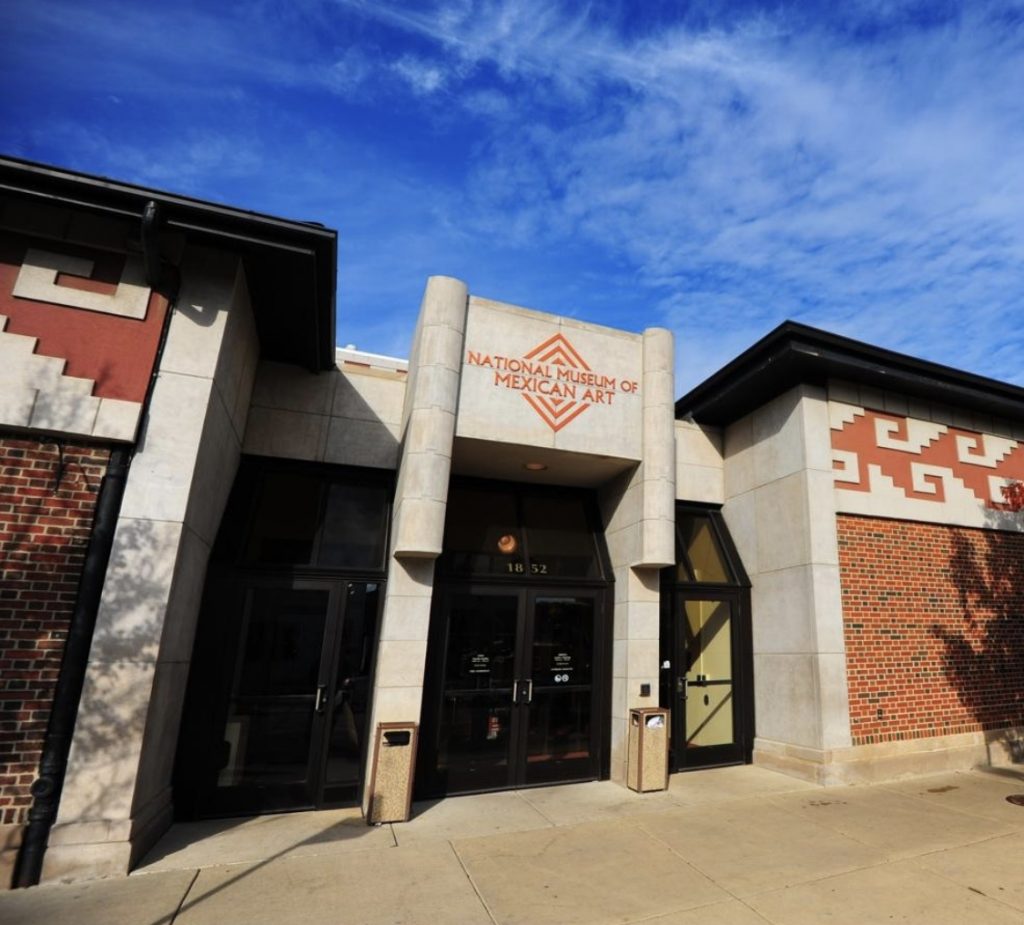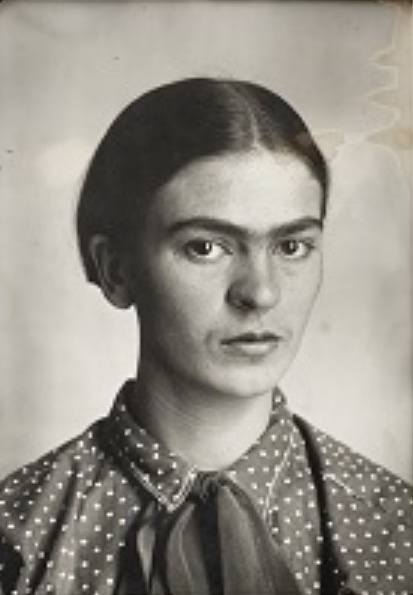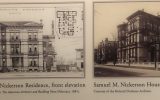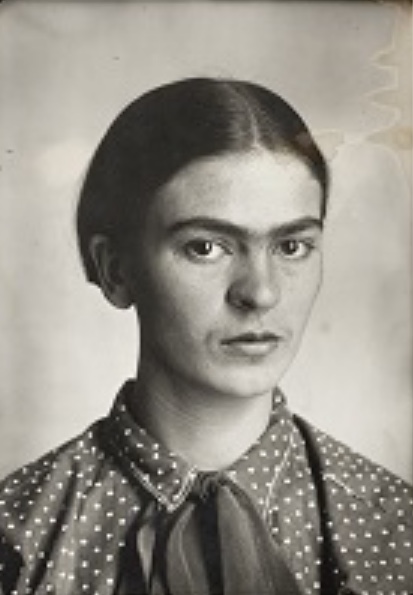
An extraordinary treasure-trove of more than 200 photographs from Frida Kahlo’s personal life will be on display from April 1st, 2022 through August 7th, 2022, from a closet in their home, La Casa Azul in Mexico City.
The National Museum of Mexican Art in Chicago is located in the heart of the third largest Mexican community in the United States. Providing free entrance and now open until 8pm every Wednesday through August 7th.Students, locals, and tourists have the opportunity to explore the following galleries:
· Surrounding Kahlo: Works from the Permanent Collection in the Rubin & Paula Torres Gallery
· Tectonic Reflections, Works by Rubén Aguirre in the Xicágo Gallery
· Nuestras Historias, Stories of Mexican Identity from the Permanent Collection in the Permanent Collection Gallery
And watch a 55-minute documentary film (English subtitles) Frida Kahlo: entre el dolor y el placer , screened each Wednesday at 6 pm in the West Wing of the Museum.The Frida Kahlo movie is a must-see for Frida fans of all ages!
I thought it would be interesting to hear from one the curators from the museum. By a happy coincidence, I was introduced to Rebecca D. Meyers, Permanent Collection Curator, who gave me a personal preview of Surrounding Kahlo: Works from the Permanent Collection, who was kind enough to be interviewed and share her insights with me.
Have you visited Casa Azul and if so, what were your impressions?
Rebecca D. Meyers:
Yes, at least twice. My first time was in 1989. It was magical and profound to experience Frida Kahlo’s tangible surroundings. In hindsight, it was also an eye opener as to how her fame had not yet exploded. While trying to find La Casa Azul, locals were unable to direct me to Kahlo’s home, except by the name of Señora Rivera.
What was your first exposure to Frida Kahlo and where did that lead?
Rebecca D. Meyers:
As an art student and aspiring woman artist, I visited a Frida Kahlo exhibit held at the Museum of Contemporary Art in Chicago in the late 70s. I was hooked and followed up with reading Hayden Herrera’s biography of Frida Kahlo. Years later in my museum career, as the Permanent Collection Curator for the National Museum of Mexican Art (NMMA), I made a conscious effort to collect insightful artwork, inspired by Kahlo. She continues to inspire so many contemporary artists. Of course, we would love to acquire an original Kahlo painting, which would be a signature piece for the NMMA. It will also attract more visitors to the Museum, where they will experience a deeper understanding of Mexico, our neighbor to our south and neighbor’s culture down the block.
Drawn entirely from the National Museum of Mexican Art’s Permanent Collection, you have brilliantly curated this exhibition to focus on some of the works inspired by Frida Kahlo executed by her students, known as “Los Fridos”. Who were Los Fridos?
Rebecca D. Meyers:
Los Fridos refers to a small group of Frida’s students, generally accepted to be Fanny Rabel, Arturo García Bustos, Guillermo Monroy and Arturo Estrada. Kahlo was among the very few women faculty in 1943 at La Esmeralda, a fine arts school, in central Mexico City. Over time, the physical demands of commuting from La Casa Azul, located in the distant neighborhood of Coyoacán, prompted her to invite her students into her home. The young pupils surrounded Frida and in turn were enveloped by her lush garden, visiting artists, a rich collection of arte popular, her menagerie and her affection. Kahlo’s teaching style has been described as informal, allowing the unique talents of each artist to emerge.
You decided to show some of the works that are kinds of things Frida Kahlo surrounded herself with at Casa Azul. Why is this important and what do you hope visitors can take with them from this exhibition?
Rebecca D. Meyers:
Kahlo and Rivera collected a vast assortment of traditional Mexican regional art including decorative objects, serving dishes, dolls, miniatures, toys, masks, votive paintings and religious figures. Many are embellished with flora and fauna motifs, are whimsical or surreal. They also surrounded themselves with items from pre-Cuauhtémoc cultures. This is a political statement for the time, finally celebrating indigenous Mexican heritage which had previously been overshadowed by a Eurocentric viewpoint. I also took this opportunity to feature some of our older arte popular items, many of which have never been exhibited before. It is important to preserve these incredibly fragile items.
One of the works on display is the huipil y falda worn by Sandra Cisneros at her U.S. National Medal of the Arts presentation. It’s a Tehuana woman’s dress, typical of the regions called the Isthmus of Tehuantepec in Oaxaca. Why did you chose to include it in the exhibition?
Rebecca D. Meyers:
Like Kahlo, Sandra Cisneros (b. 1954, Chicago), poet and author of the celebrated book, The House on Mango Street, embraces her Mexican heritage. On a recent visit to the NMMA, Cisneros told me she believes that what folks choose to wear is a powerful personal declaration.
Frida espoused Tehuana clothing, since her mother was born in Oaxaca and Tehuantepec is noteworthy for its matriarchal society. She would also often braid her hair into traditional floral ribboned headdresses and don silver or pre-Cuauhtémoc jewelry crafted in stone or shell.
The National Museum of Mexican Art is open 10:00 am – 5:00 pm Tuesday and Thursday-Sunday, and admission is ALWAYS FREE!
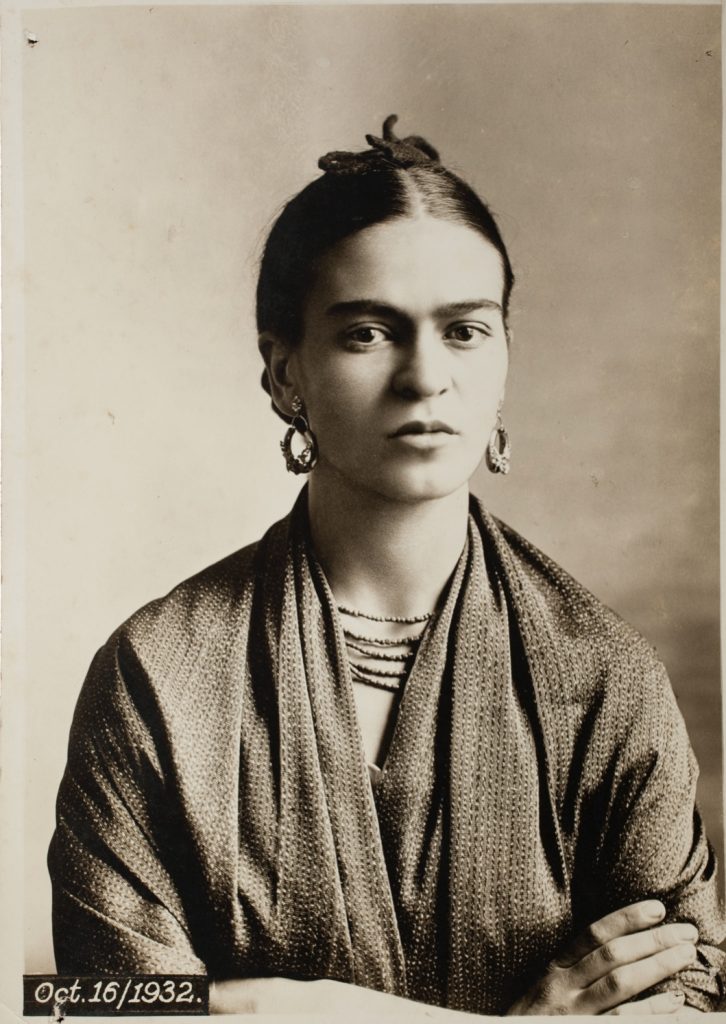
Transportation information to the museum:
From downtown take an Uber to 1852 W. 19th Street
Public transportation from the loop:
Pink Line train to the Damen stop or 18th Street stop
Number 50 Damen bus to 19th Street
Number 9 Ashland
